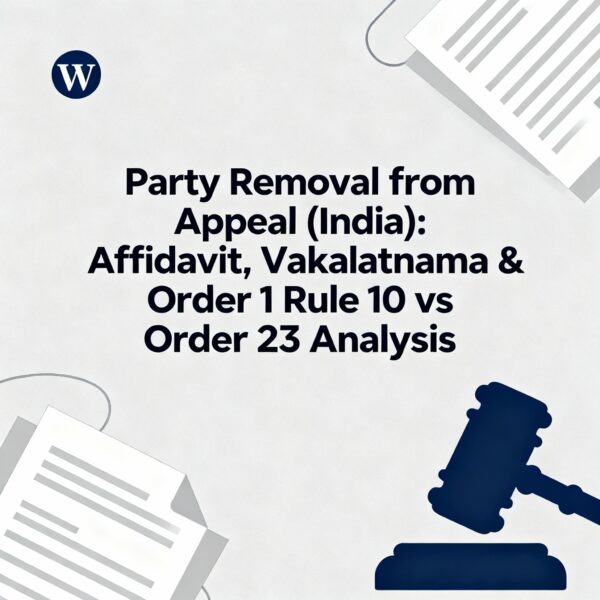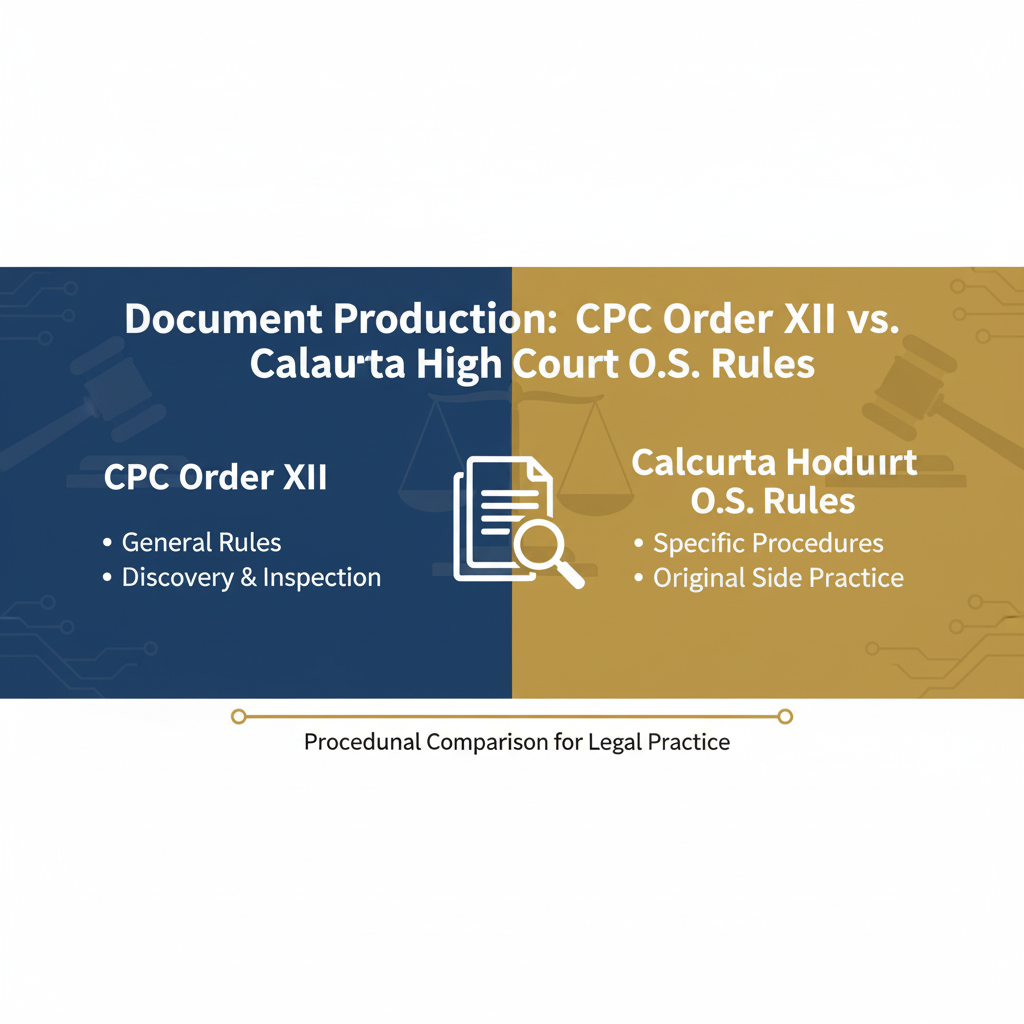Section 20 Provincial Insolvency Act, 1920: Guide to Petitions, Affidavits & Interim Receivers
Welcome to the most comprehensive legal analysis of Section 20 of the Provincial Insolvency Act, 1920, updated for October 2025. This in-depth guide is designed for legal practitioners, law students, and anyone involved in legacy insolvency proceedings in India.
We will deconstruct the critical role of petitions and affidavits in the appointment of an interim receiver, explore landmark judgments that have shaped its interpretation, and provide a clear comparative analysis against the modern framework of the Insolvency and Bankruptcy Code (IBC), 2016.
Whether you are drafting a petition or seeking to understand the procedural nuances, this guide provides the crucial insights and practical templates you need to navigate this foundational piece of Indian insolvency law.
Petitions and Affidavits Under Section 20 of the Provincial Insolvency Act, 1920
A comprehensive legal and procedural guide to one of the cornerstones of India's historical insolvency framework.
Executive Summary
This report provides a comprehensive analysis of Section 20 of the Provincial Insolvency Act, 1920 (PIA), a critical protective measure to preserve a debtor's estate. While repealed by the Insolvency and Bankruptcy Code, 2016 (IBC), a savings clause ensures its continued applicability to pending proceedings. This guide serves as an authoritative resource for navigating legacy cases and understanding the jurisprudential foundations of modern Indian insolvency law, drawing a clear comparative line to the role of the Interim Resolution Professional under the IBC.
Part I: A Foundational Overview
Historical Moorings and Legislative Intent
The law of insolvency in India, a transplant from English common law, was first codified for Presidency-towns due to their commercial activity. The Provincial Insolvency Act, 1920 (PIA) was enacted to create a uniform framework for the "mofussil" or provincial territories, consolidating and amending the earlier 1907 Act. This bifurcation reflected the socio-economic asymmetries of colonial India, a fragmented landscape that persisted until the Insolvency and Bankruptcy Code, 2016.
Core Objectives: The Balancing Act
The PIA's philosophy rests on a delicate balance between two competing objectives: providing relief to the honest but unfortunate debtor and ensuring an orderly, equitable distribution of assets for creditors. This principle underpins the entire procedural structure of the Act.
The Core Philosophy of Insolvency Law
Part II: Deconstructing Section 20
Section 20 is a pivotal provision empowering the court to appoint an interim receiver to take immediate protective measures over a debtor's estate. Its purpose is to preserve the *status quo* and prevent asset dissipation between the petition's admission and the final adjudication.
Timing of Appointment
Can be appointed upon admission of the petition or any time before adjudication.
Discretion vs. Mandate
Discretionary for a creditor's petition ("may"), but almost mandatory for a debtor's petition ("ordinarily shall").
Scope of Power
Derives powers from the Code of Civil Procedure, 1908, but only as specified by the court's order.
Immediate Action
The court can direct the receiver to take "immediate possession" of the property, highlighting the urgency.
Part III: Acts of Insolvency - The Legal Triggers
An insolvency petition by a creditor cannot be filed merely because a debt is owed. The law requires a specific trigger: the debtor must have committed an "act of insolvency" as defined under Section 6 of the PIA. These acts are statutory signals that the debtor's financial stability is compromised, justifying the court's intervention.
Fraudulent Transfers
Making a transfer of all or substantially all property to a third person for the benefit of creditors generally, or any transfer made with the intent to defeat or delay creditors.
Concealment & Evasion
Departing from or remaining out of India, leaving their dwelling-house, or otherwise secluding themselves to evade creditors.
Execution of Decree
If any of the debtor's property has been sold or attached in execution of a court decree for the payment of money.
Notice of Suspension
Giving notice to any creditor that they have suspended, or are about to suspend, payment of their debts. This is a direct admission of financial distress.
Part IV: Anatomy of an Insolvency Petition
The petition is the foundational document of the insolvency proceeding. Its accuracy and completeness are paramount. Under Section 13 of the PIA, every petition must be in writing, verified in the manner prescribed by the Code of Civil Procedure, 1908, and must contain specific, non-negotiable particulars.
- Debtor's Financial Statement: A detailed statement showing all assets, their estimated value, and their location. It must also list all creditors, the amounts owed to each, and the securities they hold.
- Willingness to Vest Property (Debtor's Petition): If filed by the debtor, it must include a statement that they are unable to pay their debts and are willing to place their property at the court's disposal for distribution.
- Pleading the Act of Insolvency (Creditor's Petition): If filed by a creditor, the petition must specify the act of insolvency committed by the debtor, providing sufficient particulars to establish a prima facie case.
- Jurisdictional Facts: The petition must clearly state the facts that grant the specific court jurisdiction to hear the matter (e.g., the debtor ordinarily resides or carries on business within the court's territorial limits).
Part V: Procedural Trajectory from Admission to Adjudication
The insolvency process follows a clear, structured path mandated by the Act. The journey from filing a petition to receiving a final order is a multi-stage process, designed to ensure fairness and due process for all parties involved.
Filing of Petition
Petitioner files a verified petition with affidavit and schedules of assets/liabilities. Governing Sections: 7, 9, 10, 13
Admission of Petition
Court conducts a *prima facie* review and formally admits the petition, fixing a hearing date. Governing Sections: 18, 19
Appointment of Interim Receiver
The court appoints an Interim Receiver to secure the debtor's property and prevent its dissipation. Governing Section: 20
Issuance of Notices
Notice of the hearing is published for creditors and served on the debtor. Governing Sections: 19(2), 19(3)
Hearing
The court examines the debtor, hears evidence, and adjudicates the merits of the petition. Governing Section: 24
Final Order
The Court either dismisses the petition or makes a formal Order of Adjudication, declaring the debtor insolvent. Governing Sections: 25, 27
Part VI: The Interim Receiver - Powers, Duties, and Scrutiny
The interim receiver's singular duty is the preservation of the debtor's estate. They act as the court's custodian, ensuring that property which may become divisible among creditors is not wasted, damaged, or wrongfully transferred.
Landmark Judgment: T.S. Sailappan v. Subbiah Pillai
This Madras High Court case was pivotal. It established that an interim receiver possesses the *locus standi* (legal standing) to challenge a court-ordered auction sale of the debtor's property. The court adopted a purposive interpretation, reasoning that the duty to "preserve" the estate would be hollow without the power to "protect" it from wrongful diminution. This transformed the receiver from a passive custodian to an active guardian of the estate.
Part VII: The Crucial Role of the Affidavit
While the petition lays out the legal grounds, the affidavit provides the evidentiary support. For a creditor seeking the appointment of an interim receiver, the affidavit is not a mere formality; it is the primary tool of persuasion. The court's decision to exercise its discretion under Section 20 often rests on the strength and credibility of the affidavit's contents.
What Makes a Strong Affidavit?
- Specificity over Generalities: Instead of saying "the debtor is alienating property," state "On [Date], I learned from [Source] that the debtor is negotiating the sale of his property at [Address] to [Buyer's Name] for a price significantly below market value."
- Demonstrable Urgency: The affidavit must convey a sense of immediacy. It should explain why the appointment of a receiver cannot wait until the final hearing.
- Corroborating Evidence: If possible, annex supporting documents. This could include returned cheques, communication from the debtor admitting financial difficulty, or public records of property transfers.
- Clear and Unambiguous Language: The affidavit must be sworn and verified, affirming the truthfulness of its contents. Vague or evasive statements will weaken its impact and credibility.
Part VIII: The PIA in the Modern Era - A Comparative Analysis with the IBC, 2016
The enactment of the Insolvency and Bankruptcy Code, 2016, marked a watershed moment, repealing the PIA but including a savings clause for pending proceedings. The most fundamental difference lies in their core philosophy.
Conceptual Shift: From Liquidation to Resolution
The PIA was primarily focused on a liquidation-based approach, while the IBC represents a paradigm shift towards a "resolution"-oriented framework, prioritizing keeping the enterprise as a "going concern".
Interim Receiver (PIA) vs. Interim Resolution Professional (IBC)
| Feature | Interim Receiver (IR) under PIA, 1920 | Interim Resolution Professional (IRP) under IBC, 2016 |
|---|---|---|
| Primary Objective | Preservation and custody of property for eventual liquidation. | Management of the corporate debtor as a "going concern" for resolution. |
| Source of Powers | Powers of a receiver under the CPC, 1908, as directed by the Court. | Extensive powers vested directly by the IBC, including management control. |
| Role | Officer of the Court; primarily a passive custodian. | Insolvency Professional; an active manager of the entire corporate debtor. |
| Scope of Control | Takes possession of specified property only. | Takes complete control of management and operations. |
| Outcome Focus | Secure assets for distribution to creditors. | Stabilize the business to facilitate a resolution plan. |
Interactive Legal Glossary
Use the filter below to quickly find definitions of key terms used in the Provincial Insolvency Act.
-
Act of Insolvency
An act by a debtor, defined in Section 6 of the PIA, which gives a creditor grounds to file an insolvency petition. Examples include transferring property to defeat creditors or giving notice of suspension of payment.
-
Adjudication Order
The formal declaration by the court under Section 27 that the debtor is an insolvent. This is the central event that triggers the vesting of the debtor's property.
-
Interim Receiver
A court-appointed officer under Section 20 tasked with taking temporary possession and custody of a debtor's property to preserve it pending a final order.
-
Locus Standi
A Latin term meaning "place to stand." It refers to the right or legal capacity to bring an action or appear in a court.
-
Moratorium
A legal stay or prohibition on commencing or continuing any suit or legal proceeding against the insolvent's property, imposed by Section 28(2) after an adjudication order.
-
Secured Creditor
A creditor who holds a mortgage, charge, or lien on the debtor's property as security for their debt. Their rights to the secured asset are largely protected from the general insolvency process.
Part IX: Strategic Recommendations
The efficacy of an insolvency proceeding under the PIA hinges on meticulous adherence to its procedural requirements. For legal practitioners, a thorough understanding of the statute, its nuances, and the relevant case law is the most critical tool for success.
For Creditors
Make a compelling case for the necessity of an interim receiver. The affidavit must demonstrate a clear and present danger of asset dissipation by the debtor.
For Debtors
Be prepared for the immediate loss of control over property. Full, transparent, and accurate disclosure in financial schedules is paramount to avoid adverse consequences.
Best Practices
Ensure robust documentation, precise adherence to procedural timelines, and strategic use of judicial precedents like *T.S. Sailappan*.
Part X: Legal Formats and Templates
The following templates provide a basic structure for an affidavit filed on behalf of a petitioner under Section 20 of the Provincial Insolvency Act, 1920. Disclaimer: These are for informational purposes only and should be adapted and vetted by a qualified legal professional.
Affidavit on Behalf of Petitioner (English)
IN THE COURT OF THE DISTRICT JUDGE AT [DISTRICT NAME]
Insolvency Petition No. ______ of 20__
In the matter of:
[Petitioner's Name] ... Petitioner
Vs.
[Debtor's Name] ... Respondent
AFFIDAVIT ON BEHALF OF THE PETITIONER UNDER SECTION 20 OF THE PROVINCIAL INSOLVENCY ACT, 1920
I, [Petitioner's Name], son of [Father's Name], aged about __ years, residing at [Address], do hereby solemnly affirm and state on oath as follows:
1. That I am the Petitioner in the above-mentioned insolvency petition and am fully conversant with the facts and circumstances of the case.
2. That the Respondent/Debtor is justly and truly indebted to me in the sum of Rs. ______/- (Rupees __________ only) on account of [state reason for debt].
3. That the Respondent has committed an act of insolvency within the meaning of Section 6 of the Provincial Insolvency Act, 1920, by [describe the act of insolvency, e.g., transferring property to a third party with intent to defeat his creditors].
4. That I have a credible apprehension that the Respondent is about to abscond with or dispose of his property to prevent its distribution among his creditors. [Provide specific reasons for this apprehension, e.g., "The Respondent has recently sold his ancestral property under suspicious circumstances..."].
5. That it is just, necessary, and expedient for the preservation of the Respondent's estate that an Interim Receiver be appointed to take immediate possession of the said property.
6. That if an Interim Receiver is not appointed, I will suffer irreparable loss and the very purpose of this insolvency petition will be defeated.
PRAYER
It is, therefore, most respectfully prayed that this Hon'ble Court may be pleased to appoint an Interim Receiver under Section 20 of the Provincial Insolvency Act, 1920, to take immediate possession of the property of the Respondent as detailed in the petition.
DEPONENT
VERIFICATION
Verified at [Place] on this __ day of ______, 20__, that the contents of the above affidavit are true to my knowledge and belief.
DEPONENT
Part XI: Conclusion
The Provincial Insolvency Act, 1920, though largely superseded, remains a testament to the evolution of India's economic laws. Section 20, in particular, embodies a crucial legal principle: the necessity of preserving the subject matter of a dispute to ensure that justice, when finally delivered, is not a hollow victory. The appointment of an interim receiver is a powerful, protective remedy designed to freeze the debtor's estate and prevent the unjust dissipation of assets that rightfully belong to the pool available for creditors.
For legal practitioners handling legacy cases under the PIA, a deep appreciation of the interplay between the petition, the specific "act of insolvency," and the evidentiary weight of the supporting affidavit is crucial. While the modern Insolvency and Bankruptcy Code has shifted the focus from liquidation to resolution, the foundational concepts of asset preservation pioneered by provisions like Section 20 continue to influence and inform the duties of resolution professionals today. Understanding this historical context is not merely an academic exercise; it is essential for a holistic comprehension of Indian insolvency jurisprudence.









